
Fractals patterns that keep repeating forever, show up all over nature and in our bodies too. Our brains do fractal stuff constantly, and our eyes move in a way that makes fractal branches on our retina. Our whole body is made of fractal bits and is surrounded by fractals everywhere, from one person to all of us. You can also find fractals inside our body parts, like our lungs for instance which have fractal qualities.

There is more to it than plain similarities. Fractals have an impact on how our bodies and minds work. Looking at fractals can cut down stress and brain tiredness the same way like looking on the nature. And nature contains fractals too. So we have full circle here.
I was looking the other day for ballet dancers silhouettes for drawing. I have find bunch of interesting pictures done by playing with long exposure. It reminded me a lot ‘Dance of 1000 hands’.
Saman (or the dance of a thousand hands) is one of the most popular dances in Indonesia. Its origin is from the Gayo ethnic group from Gayo Lues, Aceh province, Indonesia, and is normally performed to celebrate important occasions.[1] The dance is characterized by its fast-paced rhythm and common harmony between dancers. These two elements are key figures of Saman and are among the reasons Saman is widely known and practiced in Indonesia, besides being relatively easy to learn. On November 24, 2011, UNESCO officially recognized Aceh's traditional Saman dance as an Intangible Cultural Heritage in Need of Urgent Safeguarding.
The 1000 hands dance involve within itself fractal – like shapes. The dancers move in perfectly harmonious way creating perfectly symmetrical shapes. During the movement, which is probably the most recognisable one for this type of dance, the dancers spread out their hands, one by one, forming a "blooming lotus" or a slowly unfolding fan. And that ‘blooming’ movement become the inspiration for my piece.

But let’s go back to ballet dancers. All ballet dancers face tough physical challenges. They need to have good deal of stamina, be strong, and move fast. This shows up in their dance moves, which they do over and over with a lot of energy. The footwork, jumps, and leaps in ballet need dancers to be quick and light on their feet. The smooth and exact moves of ballet dancers, including how they position their arms, feet, and body, follow specific rules and basic movements. This creates patterns that look fractal-like. These moves itself can be seen as fractals too, because they have parts that look the same and are pretty complex. More so - the way ballet dancers keep their balance and control their posture involves tricky and self-similar patterns. So yeah... all fractals!

About the Drawing
I have found many images where photographers have played with long exposure times. "Painting with light" is one of the main interests in this subject. But there is plenty more to do with this type of photography. We can capture ghost-like silhouettes, add drama to a classic portrait or document an entire movement in one shot.
I was captivated by the precision with which the dancers were able to move and stop at even intervals, allowing the photographer to capture the full 'figure' step by step. And it was 'fractal' that was my first thought as I watched this graceful series of movements captured in a single photograph. My inspiration to new piece can be found here:
Unposed by Kolman Rosenberg
Harold E. Edgerton
Back Dive
Geometric ballet

I wish you lovely Sunday and a great week!
Yours,
Strega Azure

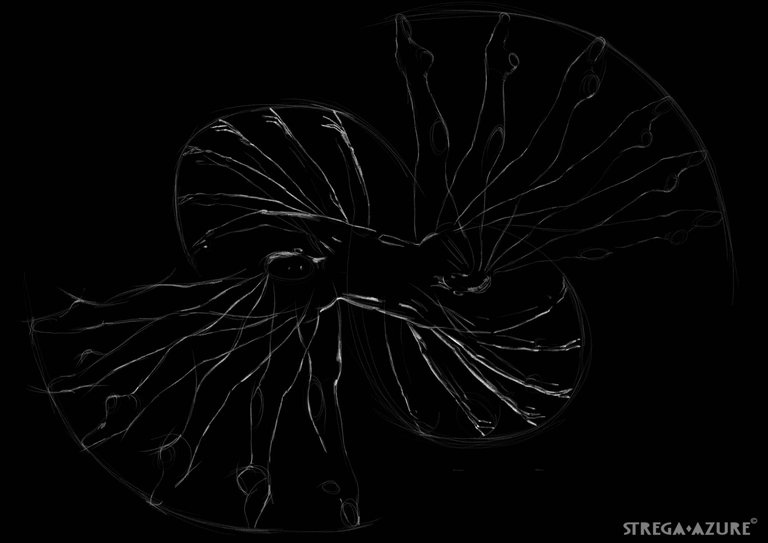

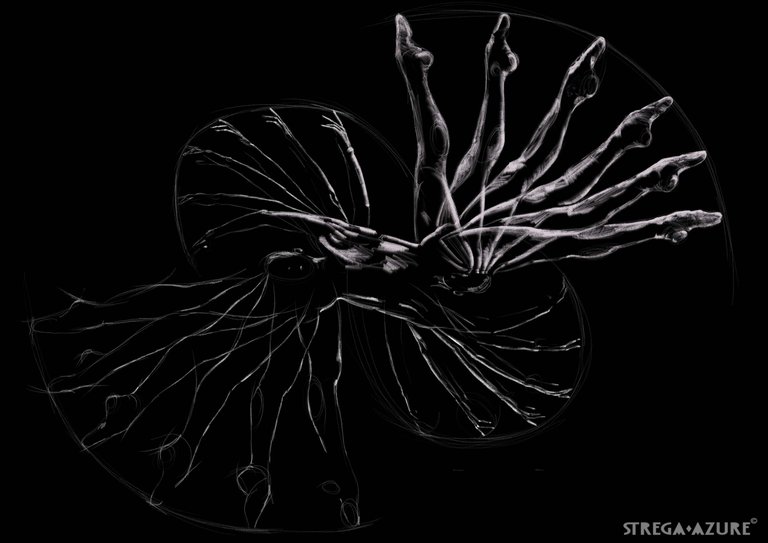

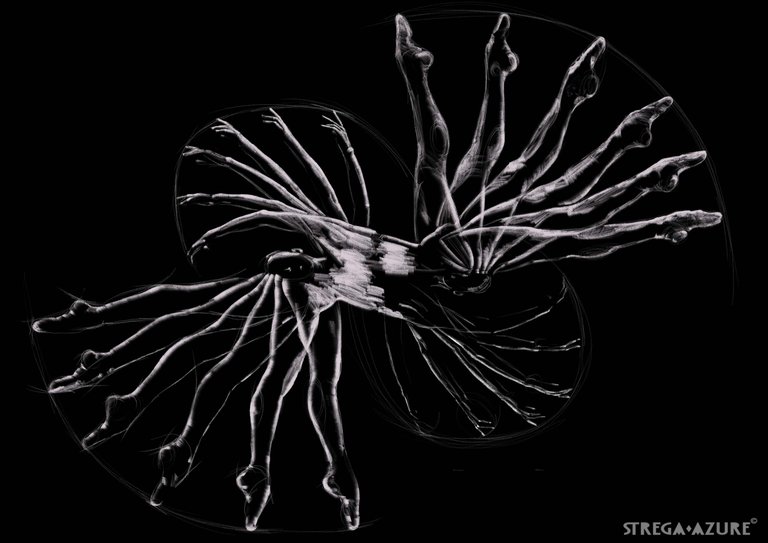



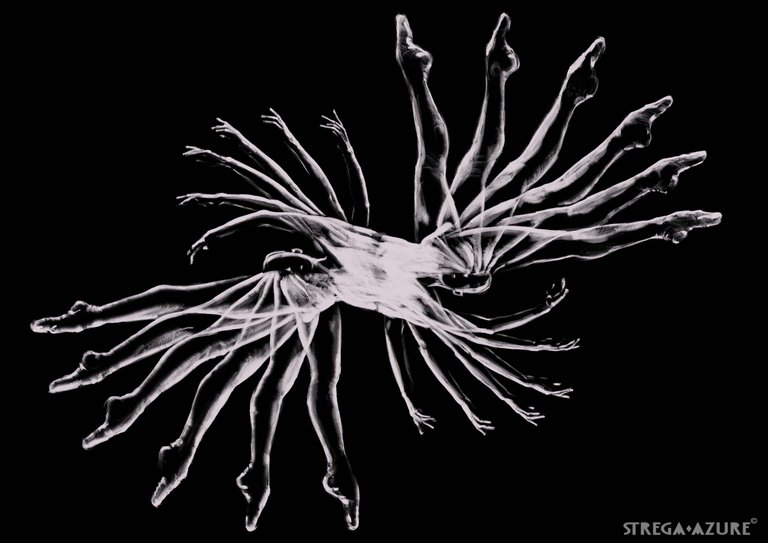

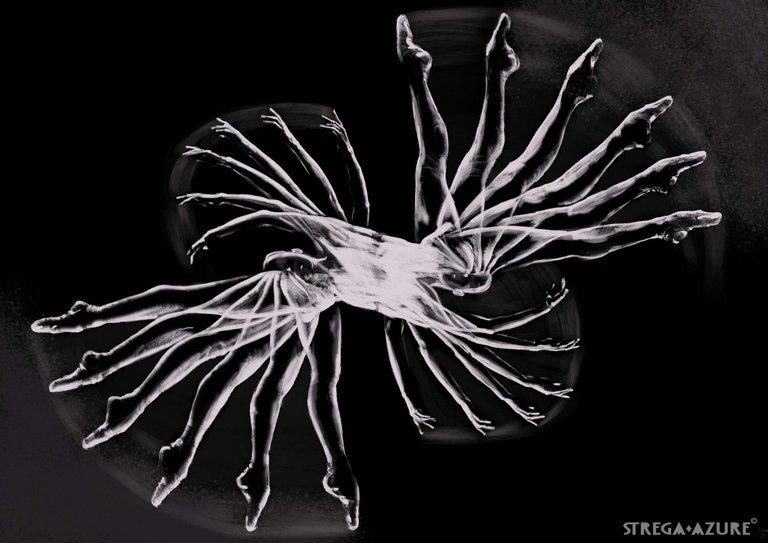

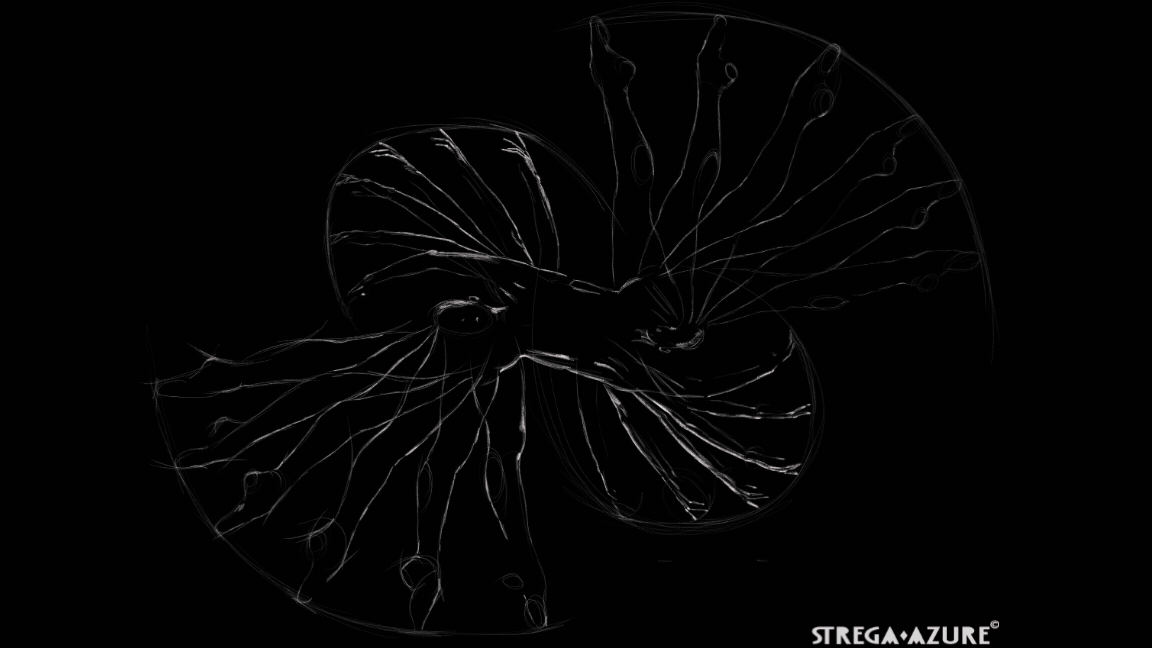

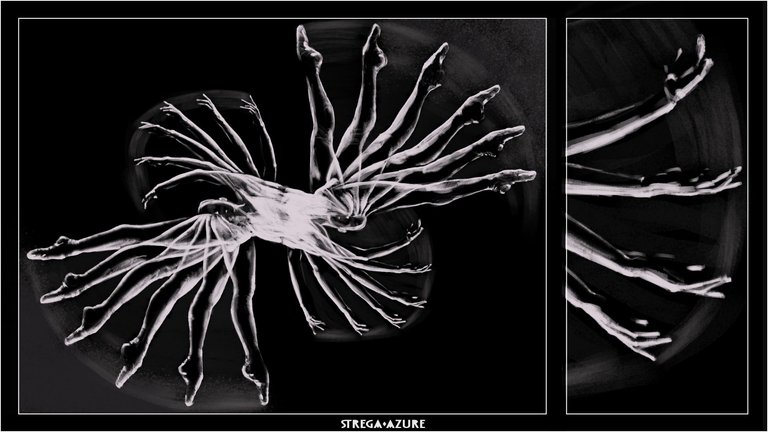

I used open source program 'Krita'
and Kamvas 13 tablet Huion, web 'Canva' to create a gif file

Drawing & pictures are my authorship if not stated otherwise.
All rights reserved @strega.azure ©


and Kamvas 13 tablet Huion, web 'Canva' to create a gif file

Drawing & pictures are my authorship if not stated otherwise.
All rights reserved @strega.azure ©


All rights reserved @strega.azure ©

